One Of The Best Tips For Writing Descriptions Of Pain Is Actually A Snippet I Remember From A Story Where
One of the best tips for writing descriptions of pain is actually a snippet I remember from a story where a character is given a host of colored pencils and asked to draw an egg.
The character says that there’s no white pencil. But you don’t need a white pencil to draw a white egg. We already know the egg is white. What we need to draw is the luminance of the yellow lamp and the reflection of the blue cloth and the shadows and the shading.
We know a broken bone hurts. We know a knife wound hurts. We know grief hurts. Show us what else it does.
You don’t need to describe the character in pain. You need to describe how the pain affects the character - how they’re unable to move, how they’re sweating, how they’re cold, how their muscles ache and their fingers tremble and their eyes prickle.
Draw around the egg. Write around the pain. And we will all be able to see the finished product.
More Posts from Writersreferencez and Others

Fear Elements for Your Fiction
Places Creepy places make atmospheric fiction settings.
Is there a place that makes you feel cold? Are you terrified of walking a certain path, especially in the dark?
Recall a scary dream. Where did that dream take place?
Wierd Shudders Are you frightened of something that others people consider harmless?
The sight of long fingernails, the sound of nails scraping on a blackboard. Moths and butterflies flying in your face?
If you have a shudder that makes you feel low-key creeped out in daily life write about it.
Phobias Many people of phobias about particular objects and situations. If you have a phobias, try writing about it.
Childhood Fears Whether the danger was true or imagined, the fear you experienced in your childhood was probably intense.
What if there really was a monster under your bed?
Gian black steam engines, the blue glow of an automatic door lock, the gaping hole of an empty closet?
Dreams Do you have a recurring nightmare? Something that makes you wake up with sweat?
Human Attitudes What are some things that people do that you find scary or creepy?
Unbending bureaucracy? Bullying? People consuming others' pain for entertainment? Hating others in the name of religion?
Use fiction to address these issues.
Ordinary Things Look around the ordinary things around you and ask - what if they aren't as harmless as they seem?
Metal pins on my bulletin board? Windows? The TV? A potted tomato slowly withering?
─── ・ 。゚☆: *.☽ .* . ───
💎If you like my blog, buy me a coffee☕ and find me on instagram!
💎Before you ask, check out my masterpost part 1 and part 2
💎For early access to my content, become a Writing Wizard
Reactions to tragedy
In real life, pretty much everybody reacts to tragedy differently. So why is it that every author has their pet reaction to tragedy that all their characters use? Not only is it unrealistic, but it takes away the chance for the characters’ different reactions to reveal things about themselves.
Possible reactions to tragedy (not an exhaustive list):
Distracting oneself with mindless activities
Distracting oneself with others’ humor
Distracting oneself by making jokes
Distracting oneself by reading/watching/playing stories
Distracting oneself with hard mental work
Distracting oneself with hard physical work
Distracting oneself with creative endeavors
Distracting oneself by chatting with friends about normal things
Talking to friends about the tragedy
Talking to authority figures about the tragedy
Talking anonymously with strangers about the tragedy (if possible)
Getting wrapped up in others’ problems
Staying unusually silent
Screaming
Crying loudly
Crying silently
Doing everything possible not to cry
Pacing
Taking unhealthy risks
Going for revenge against whoever one can blame
Punching random objects
Throwing random objects
Lashing out against friends and family members
Trying to prevent a similar tragedy from happening
Eating more than usual
Not eating
Taking mind-altering substances
Getting in unhealthy relationships
Isolating oneself
Obsessing over routine
Numbness combined with apathy
Numbness combined with going through one’s normal motions
Trying to get things back the way they were
Denial
No reaction at first but a reaction hits later in greater force
No reaction at all. Emotions relating to the tragedy just fail to load. Note that this can happen to anybody and does not mark a character as a sociopath.
Characters can have more than one reaction at the same time, one reaction after another, or different reactions to different tragedies.
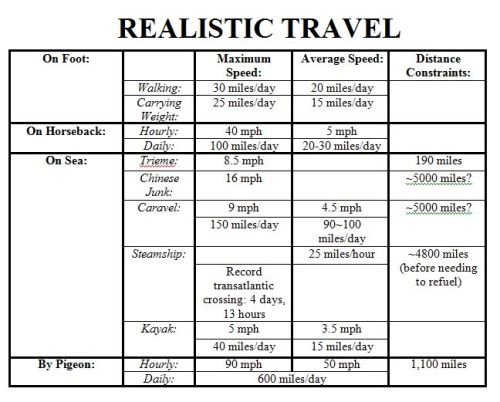
Here’s an invaluable writing resource for you.
Some advice for when you’re writing and find yourself stuck in the middle of a scene:
kill someone
ask this question: “What could go wrong?” and write exactly how it goes wrong
switch the POV from your current character to another - a minor character, the antagonist, anyone
stop writing whatever scene you’re struggling with and skip to the next one you want to write
write the ending
write a sex scene
use a scene prompt
use sentence starters
read someone else’s writing
Never delete. Never read what you’ve already written. Pass Go, collect your $200, and keep going.
sometimes you need dialogue tags and don't want to use the same four


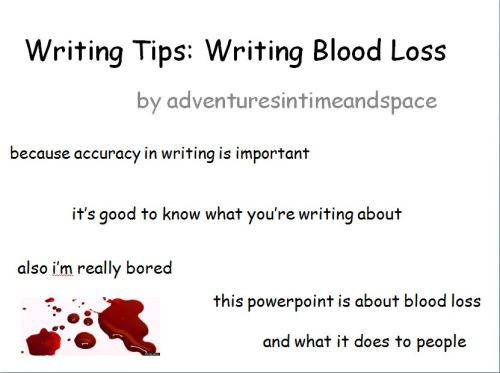
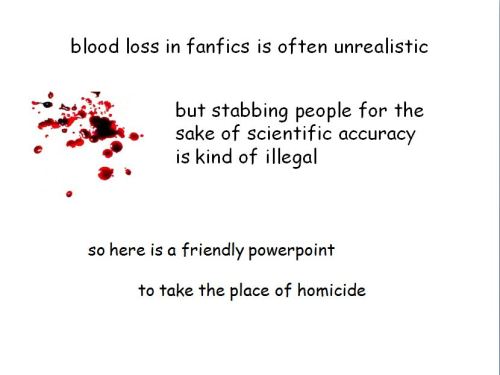

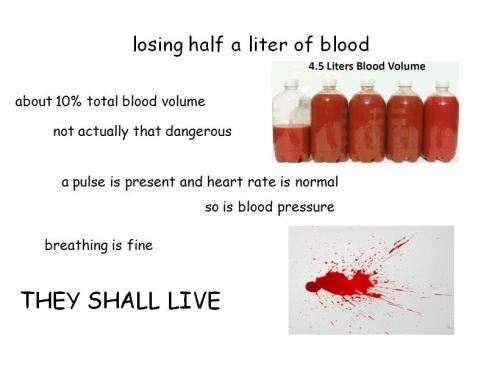
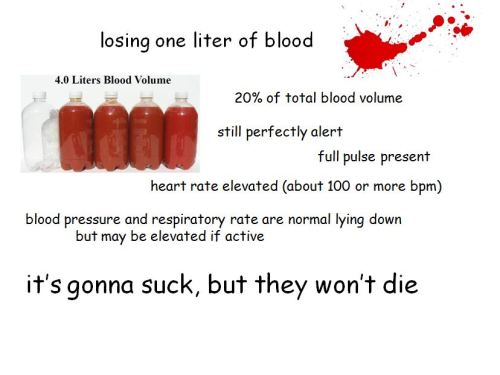
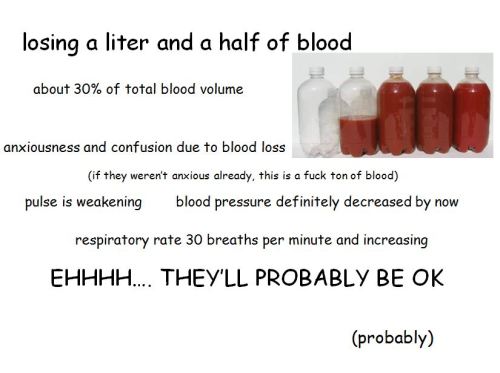



Here are some scientific facts about blood loss for all you psychopaths writers out there.
Symbolism
I thought I might not be the only writer out there who likes to put symbolism in their stories so I found some things and what they represent!!
Animals
Alligator - stealth, survival
Ant - diligence, industry, community, remarkable strength, hard working, success, patience
Antelope - action
Armadillo - boundaries, self protection
Badger - aggressiveness, passion and drive
Bat - rebirth, longevity, joy, good luck
Bear - gentle strength, dreaming, introspection, power, protection
Beaver - builder, accomplishing goals
Bee - divine messenger, love, service, gathering, community
Bird - enlightenment, perspective, swiftness, vision, prophetic knowledge
Boar - nature-based wealth, prosperity, success, protection, courage
Buffalo - prayer, abundance, survival needs met, good fortune, healing
Bulls’ horns - a good symbol in meditation for motivation
Butterfly - rebirth, the soul, transformation, the three phases of life
Cat - feminine energy, mystical power, used to keep the wearer safe in travel, wholeness
Chameleons - ever-changing future, inconsistency
Cheetah - speed, focus
Cougar - power, swiftness, balance
Cows - red cows are a symbol of hope, inspiring symbol for nurturing efforts
Coyote - trickster
Crane - longevity. A pair of cranes symbolizes “Long Marriage”
Cricket - good luck charm, singing, Spring, fertility
Crow - sacred law, gateway to supernatural, shape shifting, illusion
Deer - graceful gentleness, sensitivity, compassion, kindness
Dog - companionship, health, service, loyalty, protection, future prosperity
Dolphin - manna, joy, childlike play, helpfulness, breath of life, harmony, intelligence, self connection
Donkey - fertility, easy childbirth, efficiency, health, well-being, and luck
Dove - peace, innocence, fidelity, love, gentleness, kindnes
Dragonfly - good fortune, magic, vision, dreams, luck, and ancient knowledge, illusion
Dragon - wisdom due to long lives and potent magic, royalty, Emperor, eternity, courage, strength, rain, Spring
Eagle - courage, spirit, bravery, strength
Elephant - commitment, strength, astuteness
Elk - stamina, pride, power, majesty
Fish - miracles, providence, sea/water magic, good luck and prosperity, foresight, fortune, salmon in particular, are associated with knowledge
Fox - camouflage, adaptability, integration, tricksters, shape shifters, and possessors of great magic
Frog - healing, cleansing, messages, health, honesty, fluidity, purification
Gazelle - awareness
Giraffe - grounded vision
Goat - tenacity, diligence, can help to achieve goals, endure criticism, and stay safe. Goat’s fur or foot - an anti-evil talisman.
Goose - safe return, love of home
Grasshopper - nobility, prosperity
Hawk - nessenger, strength, foresight, truth
Hippopotamus - emotional depths
Horses - power, stamina, speed, transportation and communication - A black horse with a white marking on its forehead is lucky
Hummingbird - joy, pure love, celebration of life
Ladybug - delight, trust
Lamb - filial piety (dutiful respect or regard for parents).
Lion (baby) cubs - inspire mercy and gentleness.
Lion (grown) - inspire strength, courage
Lions - pride, nobility, cunning, courage, just laws, fairness, the sun, images can protect sacred ground.
Lizard - dreaming, foresight, ancient secrets
Lynx - secrets
Monkey - benevolence, drives away evil
Moose - self-esteem, assertiveness
Mountain Lion - wisdom, leadership
Mouse - frugality, rebirth, scrutiny
Opossum - strategy, diversion
Otter - medicine (woman), balanced feminine energy
Owl - deception, wisdom, clairvoyance, magic
Ox - evil spirits that disturb lakes, rivers, and seas
Peacock - wholeness, dignity, beauty, recognition, self assurance, pride
Pig - rebirth and rejuvenation
Porcupine - innocence
Rabbit - fear, fertility, moon magic, speed, swiftness, longevity, courage, strength
Raccoon - dexterity, disguise
Raven - magic
Robin - growth, renewal
Rooster - courageous, warlike disposition, warmth and life of the Universe
Scorpion - the “fire within” that often needs careful tending
Seal - inner voice
Sheep - sacrifice
Snake - cunning, evil, supernatural power
Spider - destiny, fate, weaving
Squirrel - gathering
Swan - grace
Tiger - courage, bravery, fierceness, strength, being in the now
Turtle - mother earth
Weasel - stealth
Whale - record keeper
Wolf - teacher, A Guide to the Sacred
Zebra - Individuality
PLANTS
Aloe- Healing, protection, affection
Amaryllis- Pride
Anemone- Forsaken
Angelica- Inspiration
Apple blossom- Preference
Arborvitae- Unchanging friendship
Aster- Symbol of Love, Daintiness
Basil- Good wishes
Bay- Glory
Begonia- Beware
Bittersweet- Truth
Black-eyed Susan- Justice
Bluebell- Humility, kindness
Candytuft- Indifference
Red carnation- My Heart Aches, admiration
- White carnation- Innocence, pure love, women’s good luck gift
- Pink carnation- I’ll never forget you
- Yellow carnation- Disdain, disappointment, rejection
Chamomile- Patience
Chives- Usefulness
Chrysanthemum- Cheerfulness
Clover, white- Think of me
Coreopsis- Always cheerful
Coriander- Hidden worth
Crocus- spring, Youthful gladness
Cumin- Fidelity
Cyclamen- Resignation and good-bye
Daffodil- Regard
Daisy- Innocence, hope
Dill- Powerful against evil
Edelweiss- Courage, devotion
Fennel- Flattery
Fern- Sincerity
Forget-me-not- True love memories
Gardenia- Secret love
Geranium- oak-leavedTrue friendship
Gladiolus- Remembrance
Goldenrod- Encouragement, good fortune
Heliotrope- Eternal love
Holly- Hope
Hollyhock- Ambition
Honeysuckle- Bonds of love
Horehound- Health
Hyacinth- Games and sport, playfulness, rashness
– Blue Hyacinth- Constancy of love
– Purple Hyacinth- Sorrow, forgiveness, regret
– Yellow Hyacinth- Jealousy
– White Hyacinth- Loveliness, prayers for someone
Hydrangea- Gratitude for being understood; frigidity and heartlessness
Hyssop- Sacrifice, cleanliness
Iris- A message
Ivy- Friendship, continuity
Jasmine- white- Sweet love
Lady’s-mantle- Comforting
Lavender- Devotion, virtue
Lemon balm- Sympathy
Lilac- Joy of youth
Lily, calla- Beauty
Lily, day- Chinese emblem for mother
Lily-of-the-valley- Sweetness, purity
Lotus Flower- Purity, enlightenment, self-regeneration, and rebirth
Magnolia- Love of nature
Marjoram- Joy and happiness
Mint- Virtue
Morning glory- Affection
Myrtle- Good luck and love in a marriage
Nasturtium- Patriotism
Oak- Strength
Oregano- Substance
Pansy- Thoughts
Parsley- Festivity
Peony- Bashful, happy life
Pine- Humility
Poppy, red- Consolation
Rhododendron- Danger, flee
Rose, red- Love, I love you.
Rose, dark crimson- Mourning
Rose, pink- Happiness
Rose, white- Purity, heavenly, I’m worthy of you
Rose, yellow- Jealousy, decrease of love
Rosemary- Remembrance
Rue- Grace, clear vision
Sage- Wisdom, immortality
Salvia, blue- I think of you
Salvia, red- Forever mine
Savory Spice- interest
Sorrel- Affection
Southernwood- Constancy, jest
Sunflower- Adoration
Sweet pea- Pleasures
Sweet William- Gallantry
Sweet woodruff- Humility
Tansy- Hostile thoughts
Tarragon- Lasting interest
Thyme- Courage, strength
Tulip, red- Passion, declaration of love
Tulip, yellow- Sunshine in your smile
Valerian- Readiness
Violet- Loyalty, devotion, faithfulness, modesty
Wallflower- Faithfulness in adversity
Willow- Sadness
Yarrow- Everlasting love
Zinnia- Thoughts of absent friends
Color
Red: Excitement, energy, passion, love, desire, speed, strength, power, heat, aggression, danger, fire, blood, war, violence, all things intense and passionate, sincerity, happiness (Only in Japan)
Pink: love and romance, caring, tenderness, acceptance and calm.
Beige and ivory: symbolize unification.
Ivory: symbolizes quiet and pleasantness.
Beige: calm and simplicity.
Yellow: signifies joy, happiness, betrayal, optimism, idealism, imagination, hope, sunshine, summer, gold, philosophy, dishonesty, cowardice, jealousy, covetousness, deceit, illness, hazard and friendship.
Dark Blue: Symbolizes integrity, knowledge, power, and seriousness.
Blue: Peace, tranquility, cold, calm, stability, harmony, unity, trust, truth, confidence, conservatism, security, cleanliness, order, loyalty, sky, water, technology, depression, appetite suppressant.
Turquoise: calm.
Teal: sophistication.
Aquamarine: symbolizes water.
Lighter turquoise: a feminine appeal.
Purple: Royalty, nobility, spirituality, ceremony, mysterious, transformation, wisdom, enlightenment, cruelty, honor, arrogance, mourning, temperance.
Lavender: femininity, grace and elegance.
Orange: Energy, balance, enthusiasm, warmth, vibrant, expansive, flamboyant, demanding of attention.
Green: Nature, environment, healthy, good luck, renewal, youth, spring, generosity, fertility, jealousy, service, inexperience, envy, misfortune, vigor.
Brown: Earth, stability, hearth, home, outdoors, reliability, comfort, endurance, simplicity, and comfort.
Gray: Security, reliability, intelligence, staid, modesty, dignity, maturity, solid, conservative, practical, old age, sadness, boring. Silver symbolizes calm.
White: Reverence, purity, birth, simplicity, cleanliness, peace, humility, precision, innocence, youth, winter, snow, good, sterility, marriage (Western cultures), death (Eastern cultures), cold, clinical.
Black: Power, sexuality, sophistication, formality, elegance, wealth, mystery, fear, evil, unhappiness, depth, style, sadness, remorse, anger, anonymity, underground, good technical color, mourning, death (Western cultures), austerity, detachment.
How to Make Fictional Settings Real (Even If You’re Faking the Whole Thing)
➤ Real Estate Listings (Yes, Seriously)
Looking up local listings in a place similar to your fictional town or city gives you surprising insight—average home styles, neighborhood layouts, what “affordable” means in that region, even local slang in the listings. + Great for, grounding your setting in subtle realism without hitting readers over the head with exposition.
➤ Google Street View (Time to Creep Around Like a Setting Spy)
Drop into a random street in a town that resembles your fictional setting. Walk around virtually. Notice what's boring.Trash cans, streetlights, sidewalk cracks, old ads. + Great for: figuring out what makes a setting feel “normal” instead of movie-set polished.
➤ Local Newspapers or Small Town Reddit Threads
Want voice? Culture? Weird local drama? This is where it lives. What’s in the classifieds? What’s pissing people off at town hall? + Great for: authentic small-town flavor, conflict inspiration, and the kind of gossip that fuels subplot gold.
➤ Fantasy Map Generator Sites (Even for Contemporary Settings!)
Not just for epic quests. Generating a map, even a basic one, can help you stop mentally teleporting your characters between places without any sense of space or distance.+ Great for: figuring out how long it takes to get from the protagonist’s house to that cursed gas station.
➤ Music from or Inspired by the Region/Culture
Even fictional cities deserve a soundtrack. Listen to regional or cultural playlists and let the vibe soak into your setting. What kind of music would be playing in your character’s world? + Great for: writing atmospherically and getting in the right emotional headspace.
➤ Online Menus from Local Diners, Restaurants, or Cafés
You want a setting that tastes real? Look at what people are actually eating. + Great for: writing scenes with meals that aren’t just “some soup” or “generic coffee.” (Also, bonus points for fictionalizing weird specials: “Tuesday Fish Waffle Night” is canon now.)
➤ Yelp Reviews (Especially the One-Star Ones)
Looking for a spark of chaos? One-star Yelp reviews will tell you what your characters complain about and where the best petty drama lives. + Great for: worldbuilding quirks, local tensions, and giving your town character.
➤ Real Estate “Before/After” Renovation Blogs
You’ll find the bones of houses, historical details, and how people preserve or erase the past. + Great for: backstory-laced settings, haunted houses, or any structure that’s more than just a place, it’s a story.
➤ Old Travel Books or Tourism Brochures
Especially the outdated ones. What used to be considered “the pride of the town”? What’s still standing? What was erased? + Great for: layering a setting with history, especially for second-generation characters or stories rooted in change.
In Which Diversity Isn't a Myth
Ok. I’m tired of the typical vampire, werewolf and fairy.I’m also tired of the occidental-centrism in mythology. Hence, this list.
I tried to included as many cultural variants as I could find and think of. (Unfortunately, I was restricted by language. Some Russian creatures looked very interesting but I don’t speak Russian…) Please, add creatures from your culture when reblogguing (if not already present). It took me a while to gather all those sites but I know it could be more expansive. I intend on periodically editing this list.
Of note: I did not include specific legendary creatures (Merlin, Pegasus, ect), gods/goddesses/deities and heroes.
Dragons
The Chinese Dragon
The Japanese Dragon
The Korean Dragon
The Vietnamese Dragon
The Greek Dragon
The Indian Dragon
The Polish Dragon
The Austrian Dragon
The British Dragon
The Ancient Dragon (Egypt, Babylon and Sumer)
The Spanish Basque Dragon
Of the Cockatrice (creature with the body of a dragon)
Alphabetical List of Dragons Across Myths (Great way to start)
Little creatures (without wings)
The Legend of the Leprechauns, The Leprechaun
Chanaque /Alux (the equivalent of leprechauns in Aztec/Mayan folklore)
Elves
Elves in Mythology and Fantasy
Elves in Germanic Mythology
Kabeiroi or Cabeiri (Dwarf-like minor gods in Greek mythology)
Norse Dwarves
The Myth of Loki and the Dwarves
Ten Types of Goblins
Goblins
Tengu: Japanese Goblins
Gnomes
More on Gnomes
Pooka: an Irish phantom
Creatures with wings (except dragons)
Fairies
All sorts of Cultural Fairies
Fairies in Old French Mythology
A Fairy List
Bendith Y Mamau (Welsh fairies)
Welsh Fairies
Peri (Persian fairies)
Yü Nü (Chinese fairies)
The Celtic Pixie
Angels in Judaism
Angels in Christianity
Hierarchy of Angels
Angels in Islam
Irish Sylph
Garuda (Bird-like creature in Hindu and Buddhist myths)
Bean Nighe (a Scottish fairy; the equivalent of a banshee in Celtic mythology)
Harpies
Spirited Creatures
Druids
Jinn (Genies in Arabic folklore)
Types of Djinns
Aisha Qandisha and Djinn in Moroccan Folklore
Oni (demons in Japanese folklore)
Nymphs
Spirits in Asturian Mythology
Valkyries
Lesovik
Boggarts: The British Poltergeist
Phantom black dogs (the Grim)
Demons in Babylonian and Assyrian Mythology (list)
Demons in the Americas (list)
European Demons (list)
Middle-East and Asia Demons (list)
Judeo-Christian Demons (list)
Nephilim, more on Nephilim
Mahaha (a demon in Inuit mythology)
Flying Head (a demon in Iroquois mythology)
Ghosts
Toyol (a dead baby ghost in Malay folklore)
Malay Ghosts
Yuki-onna (a ghost in Japanese folklore)
The Pontianak (a ghost in Malay mythology)
Funayurei (a ghost in Japanese folklore)
Zagaz (ghosts in Moroccan folklore)
Japanese Ghosts
Mexican Ghosts
Horse-like mythical creatures
Chinese Unicorns
Unicorns
The Kelpie (Could have also fitted in the sea creatures category)
The Centaur
The Female Centaur
Hippocamps (sea horses in Greek mythology)
Horse-like creatures (a list)
Karkadann, more on the Karkadann (a persian unicorn)
Ceffyl Dwfr (fairy-like water horse creatures in Cymric mythology)
Undead creatures
The Melanesian Vampire
The Ewe Myth : Vampires
The Germanic Alp
The Indonesian Vampire
Asanbosam and Sasabonsam (Vampires from West Africa)
The Aswang: The Filipino Vampire
Folklore Vampires Versus Literary Vampires
Callicantzaros: The Greek Vampire
Vampires in Malaysia
Loogaroo/Socouyant: The Haitian Vampire
Incubi and Sucubi Across Cultures
Varacolaci: The Romanian Vampire
Brahmaparusha: The Indian Vampire
Genesis of the Word “Vampire”
The Ghoul in Middle East Mythology
Slavic Vampires
Vampires A-Z
The Medical Truth Behind the Vampire Myths
Zombies in Haitian Culture
Shape-shifters and half-human creatures (except mermaids)
Satyrs (half-man, half-goat)
Sirens in Greek Mythology (half-woman and half-bird creatures)
The Original Werewolf in Greek Mythology
Werewolves Across Cultures
Werewolf Syndrome: A Medical Explanation to the Myth
Nagas Across Cultures
The Kumiho (half fox and half woman creatures)
The Sphinx
Criosphinx
Scorpion Men (warriors from Babylonian mythology)
Pooka: an Irish changelings
Domovoi (a shape-shifter in Russian folklore)
Aatxe (Basque mythology; red bull that can shift in a human)
Yech (Native American folklore)
Ijiraat (shapeshifters in Inuit mythology)
Sea creatures
Selkies (Norse mermaids)
Mermaids in many cultures
More about mermaids
Mermen
The Kraken (a sea monster)
Nuckelavee (a Scottish elf who mainly lives in the sea)
Lamiak (sea nymphs in Basque mythology)
Bunyip (sea monster in Aboriginal mythology)
Apkallu/abgal (Sumerian mermen)
An assemblage of myths and legends on water and water creatures
Slavic Water Creatures
The Encantado (water spirits in Ancient Amazon River mythology)
Zin (water spirit in Nigerian folklore)
Qallupilluk (sea creatures in Inuit mythology)
Monsters That Don’t Fit in Any Other Category
Aigamuxa, more details on Aigamuxa
Amphisabaena
Abere
Bonnacon
Myrmidons (ant warriors)
Troll, More on Trolls
Golems
Golems in Judaism
Giants: The Mystery and the Myth (50 min long documentary)
Inupasugjuk (giants in Inuit mythology)
Fomorians (an Irish divine race of giants)
The Minotaur
The Manticore, The Manticore and The Leucrouta
The Ogre
The Orthus (two-headed serpent-tailed dog)
The Windigo
The Windigo Psychosis
Rakshasa (humanoids in Hindu and Buddhist mythology)
Yakshas (warriors in Hindu mythology)
Taqriaqsuit (“Shadow people” in Inuit mythology)
References on Folklore and Mythology Across the Globe
Creatures of Irish Folklore
Folklore and Fairytales
An Overview of Persian Folklore
Filipino Folklore
Myths, Creatures and Folklore
Alaska Folklore
Spanish (Spain) Mythology
Mythical Archive
Mythology Dictionary
List of Medieval and Ancient Monsters
Native American Animals of Myth and Legends
Native American Myths
Bestiary of Ancient Greek Mythology
Mythology, Legend, Folklore and Ghosts
Angels and Demons
List of Sea Creatures
Yoruba Mythology
Ghosts Around the World, Ghosts From A to Z
Strange (Fantastic) Animals of Ancient Egypt
Egyptian Mythology
Creatures from West Africa
On the Legendary Creatures of Africa
Myths, Creatures and Folklore
References on writing a myth or mythical creatures
Writing a MYTHology in your novel?
How to Write a Myth
10 Steps to Creating Realistic Fantasy Creatures
Creating Fantasy Creatures or Alien Species
Legendary Creature Generator
Book Recommendations With Underrated Mythical Creatures
(I have stumbled upon web sites that believed some of these mythical creatures exist today… Especially dragons, in fact. I just had to share the love and scepticism.)
10 World-Building Aspects You Probably Overlooked
When crafting a fictional world, it's easy to focus on the big picture—epic battles, grand landscapes, and memorable characters. However, it’s also important to flesh out your world-building to create a ‘real’ world. Some aspects to consider when world-building are:
Local Cuisine
Consider the types of food your characters eat and how it reflects their culture, geography, and economy. Unique dishes can reveal societal values and local ingredients.
Currency & Trade
Explore the forms of currency used and the trade systems in place. This can include bartering, precious metals, or unique items as currency, influencing economic interactions.
Timekeeping Practices
Different cultures may have their own methods for measuring time, whether it's a unique calendar system, seasons, or celestial events, affecting daily life and traditions.
Cultural Taboos
Consider the unspoken rules and taboos that govern behavior in your world. These can drive conflict and character motivations, adding depth to societal interactions.
Local Flora and Fauna
Unique plants and animals can shape the environment and influence the culture, whether through medicine, food sources, or as part of local mythology.
Rituals and Festivals
Incorporate unique rituals or festivals that celebrate historical events, seasonal changes, or important life milestones, providing insight into cultural values and traditions.
Language Nuances
Explore dialects, slang, or even the use of sign language that reflects the culture and social dynamics, enriching dialogue and interactions between characters.
Architecture and Housing Styles
The design and materials of buildings can reflect climate, resources, and cultural values. Unique architectural features can tell a story about the society that built them.
Social Hierarchies and Classes
Examine how social structures affect character relationships and interactions. Class distinctions can influence everything from daily life to political power.
Environmental Impact
Consider how the natural environment shapes societal behaviours, resource usage, and conflicts. Climate and geography can drive migration patterns and societal development.
Looking For More Writing Tips And Tricks?
Looking for writing tips and tricks to better your manuscript? Check out the rest of Quillology with Haya; a blog dedicated to writing and publishing tips for authors! Instagram Tiktok
-
 eternalparadisearchive reblogged this · 1 week ago
eternalparadisearchive reblogged this · 1 week ago -
 pixie-but-unscripted reblogged this · 4 weeks ago
pixie-but-unscripted reblogged this · 4 weeks ago -
 hmmmkaaylah liked this · 4 weeks ago
hmmmkaaylah liked this · 4 weeks ago -
 knave-of-clubs reblogged this · 1 month ago
knave-of-clubs reblogged this · 1 month ago -
 hook-of-hearts liked this · 1 month ago
hook-of-hearts liked this · 1 month ago -
 tyrusralvez liked this · 1 month ago
tyrusralvez liked this · 1 month ago -
 newdawnhorizon reblogged this · 1 month ago
newdawnhorizon reblogged this · 1 month ago -
 un-official-artist liked this · 1 month ago
un-official-artist liked this · 1 month ago -
 sirzenithknight9 reblogged this · 1 month ago
sirzenithknight9 reblogged this · 1 month ago -
 error501blog liked this · 1 month ago
error501blog liked this · 1 month ago -
 absurdly-overpowered-astronaut reblogged this · 1 month ago
absurdly-overpowered-astronaut reblogged this · 1 month ago -
 absurdly-overpowered-astronaut liked this · 1 month ago
absurdly-overpowered-astronaut liked this · 1 month ago -
 cheddyjuu liked this · 1 month ago
cheddyjuu liked this · 1 month ago -
 kyanako5972 reblogged this · 1 month ago
kyanako5972 reblogged this · 1 month ago -
 fedorag liked this · 1 month ago
fedorag liked this · 1 month ago -
 cutiepancake reblogged this · 1 month ago
cutiepancake reblogged this · 1 month ago -
 winterlovesme reblogged this · 1 month ago
winterlovesme reblogged this · 1 month ago -
 paboratti liked this · 2 months ago
paboratti liked this · 2 months ago -
 starlantern reblogged this · 2 months ago
starlantern reblogged this · 2 months ago -
 amandyli liked this · 2 months ago
amandyli liked this · 2 months ago -
 darkpoisonouslove reblogged this · 2 months ago
darkpoisonouslove reblogged this · 2 months ago -
 vanilla-of-esk liked this · 3 months ago
vanilla-of-esk liked this · 3 months ago -
 brave-blake-belladonna reblogged this · 3 months ago
brave-blake-belladonna reblogged this · 3 months ago -
 kyanako5972 liked this · 3 months ago
kyanako5972 liked this · 3 months ago -
 wolf-oc liked this · 3 months ago
wolf-oc liked this · 3 months ago -
 rollundabout liked this · 3 months ago
rollundabout liked this · 3 months ago -
 tooattached2fictionalcharacters reblogged this · 3 months ago
tooattached2fictionalcharacters reblogged this · 3 months ago -
 frsoutherlandauthor reblogged this · 3 months ago
frsoutherlandauthor reblogged this · 3 months ago -
 darth-jess liked this · 4 months ago
darth-jess liked this · 4 months ago -
 artisticartery liked this · 4 months ago
artisticartery liked this · 4 months ago -
 etherealthorn liked this · 4 months ago
etherealthorn liked this · 4 months ago -
 rainbowdragonball liked this · 4 months ago
rainbowdragonball liked this · 4 months ago -
 promtsandmore reblogged this · 4 months ago
promtsandmore reblogged this · 4 months ago -
 thisisabadideamatt liked this · 4 months ago
thisisabadideamatt liked this · 4 months ago -
 rugby8 liked this · 4 months ago
rugby8 liked this · 4 months ago -
 valeriesousa liked this · 4 months ago
valeriesousa liked this · 4 months ago -
 grave-robinn liked this · 5 months ago
grave-robinn liked this · 5 months ago -
 cleodalie reblogged this · 5 months ago
cleodalie reblogged this · 5 months ago -
 cookiecatnap liked this · 6 months ago
cookiecatnap liked this · 6 months ago -
 sunlit-capybara reblogged this · 6 months ago
sunlit-capybara reblogged this · 6 months ago -
 katwarrior reblogged this · 6 months ago
katwarrior reblogged this · 6 months ago -
 brightshaw-shipper liked this · 6 months ago
brightshaw-shipper liked this · 6 months ago -
 moirabookwyrm reblogged this · 6 months ago
moirabookwyrm reblogged this · 6 months ago -
 avery-thorne-bookthoughtsblog reblogged this · 6 months ago
avery-thorne-bookthoughtsblog reblogged this · 6 months ago -
 would-we-be-friends-if-i liked this · 6 months ago
would-we-be-friends-if-i liked this · 6 months ago -
 askashapeshifter liked this · 6 months ago
askashapeshifter liked this · 6 months ago